- Clone
- RIK-2 (See other available formats)
- Regulatory Status
- RUO
- Other Names
- Apo-2 ligand, Apo-2L, TNFSF10, CD253
- Isotype
- Mouse IgG1, κ
- Ave. Rating
- Submit a Review
- Product Citations
- publications
TRAIL is a 30 kD protein known as TNF-related apoptosis inducing ligand, CD253, TNFSF10, or Apo-2L. It can be expressed as a cell surface (30 kD) and soluble ligand (19-20 kD) produced by megakaryocytes and platelets, monocytes, neutrophils, NK cells and activated T cells. This antigen is also expressed on tumor cells and transformed cell lines. TRAIL has been reported to induce apoptosis in tumor and transformed cell lines by a caspase-dependent process. This antibody is useful for flow cytometric staining and blocking studies.
Product DetailsProduct Details
- Verified Reactivity
- Human
- Reported Reactivity
- African Green
- Antibody Type
- Monoclonal
- Host Species
- Mouse
- Immunogen
- Human TRAIL-transfected mouse cell line
- Formulation
- Phosphate-buffered solution, pH 7.2, containing 0.09% sodium azide.
- Preparation
- The antibody was purified by affinity chromatography.
- Concentration
- 0.5 mg/ml
- Storage & Handling
- The antibody solution should be stored undiluted between 2°C and 8°C.
- Application
-
FC - Quality tested
Block - Reported in the literature, not verified in house - Recommended Usage
-
Each lot of this antibody is quality control tested by immunofluorescent staining with flow cytometric analysis. For flow cytometric staining, the suggested use of this reagent is ≤ 1.0 µg per 106 cells in 100 µl volume. It is recommended that the reagent be titrated for optimal performance for each application.
- Application Notes
-
Additional reported applications (for the relevant formats) include: blocking1-4 of TRAIL-induced apoptosis and T cell mediated cytotoxicity. The Ultra-LEAF™ purified antibody (Endotoxin <0.01 EU/µg, Azide-Free, 0.2 µm filtered) is recommended for functional assays (Cat. No. 308214).
-
Application References
(PubMed link indicates BioLegend citation) -
- Kayagaki N, et al. 1999. J. Immunol. 162:2639. (Block)
- Uno K, et al. 2003. Blood 101:3658. (Block)
- Sato K, et al. 2005. J. Immunol. 174:4025. (Block)
- Denny MF, et al. 2007. Blood 110:2907. (Block)
- Kemter E, et al. 2011. Xenotransplantation. 19:40. PubMed
- Product Citations
-
- RRID
-
AB_345288 (BioLegend Cat. No. 308202)
Antigen Details
- Structure
- TNF ligand superfamily member, approximately 30 kD
- Distribution
-
Widespread, highest expression in spleen, lung, prostate; NK, monocytes, neutrophils, activated T cells
- Function
- Induces apoptosis in tumorigenic and transformed cell lines, involved in T cell mediated cytotoxicity, TRAIL ligand of cognate receptors induces NF-κB signaling in a variety of cell types
- Ligand/Receptor
- DR4 and DR5 cognate receptors, also binds to the decoy receptors DcR1 and DcR2
- Cell Type
- Monocytes, Neutrophils, NK cells, T cells
- Biology Area
- Immunology
- Molecular Family
- CD Molecules
- Antigen References
-
1. Pitti RM, et al. 1996. J. Biol. Chem. 271:12687.
2. Mariani SM, et al. 1998. Eur. J. Immunol. 28:973.
3. Dorothee G, et al. 2002. J. Immunol. 169:809.
4. Crist SA, et al. 2004. Exp. Hematology 32:1073. - Gene ID
- 8743 View all products for this Gene ID
- UniProt
- View information about CD253 on UniProt.org
Other Formats
View All CD253 Reagents Request Custom Conjugation| Description | Clone | Applications |
|---|---|---|
| Purified anti-human CD253 (TRAIL) | RIK-2 | FC,Block |
| PE anti-human CD253 (TRAIL) | RIK-2 | FC |
| APC anti-human CD253 (TRAIL) | RIK-2 | FC |
| TotalSeq™-A0803 anti-human CD253 (Trail) | RIK-2 | PG |
| Ultra-LEAF™ Purified anti-human CD253 (Trail) | RIK-2 | FC,Block |
| PE/Cyanine7 anti-human CD253 (Trail) | RIK-2 | FC |
| TotalSeq™-C0803 anti-human CD253 (Trail) | RIK-2 | PG |
| TotalSeq™-B0803 anti-human CD253 (Trail) | RIK-2 | PG |
Customers Also Purchased
Compare Data Across All Formats
This data display is provided for general comparisons between formats.
Your actual data may vary due to variations in samples, target cells, instruments and their settings, staining conditions, and other factors.
If you need assistance with selecting the best format contact our expert technical support team.
-
Purified anti-human CD253 (TRAIL)
-
PE anti-human CD253 (TRAIL)
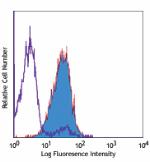
Human TRAIL transfected cells stained with RIK-2 PE -
APC anti-human CD253 (TRAIL)
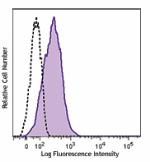
Human TRAIL transfected L5178Y cells were stained with CD253... -
TotalSeq™-A0803 anti-human CD253 (Trail)
-
Ultra-LEAF™ Purified anti-human CD253 (Trail)
-
PE/Cyanine7 anti-human CD253 (Trail)

hTRAIL transfected L5178Y cells were stained with CD253 (Tra... -
TotalSeq™-C0803 anti-human CD253 (Trail)
-
TotalSeq™-B0803 anti-human CD253 (Trail)





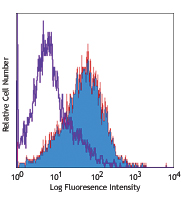

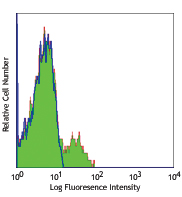
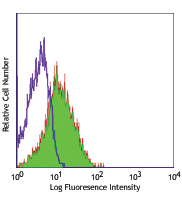



Follow Us